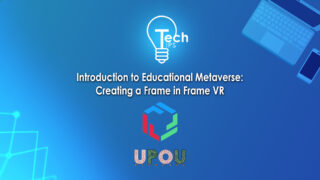How can one produce a video material that uses visual storytelling?
I think with any kind of project, you always begin with what is your intention. You think about, do I want to inform people with a project that I’m doing? Is my purpose to educate? Is my purpose to entertain?
So whatever project it is, it more or less falls under those general categories. So if it’s a project in class, okay, I want to educate or maybe I want to inform. So when you know that that is your purpose, then you begin to see how you can visualize that intention. Meaning what sound and images can I use in order to arrive at that goal.
So from there, you know, that could be anything already. So like, it could be like, okay, I talked about criminal investigation. For example, my purpose is to educate someone on what are the values that you need when you are in the purpose of investigating a crime scene. So you may want to do that in an instructional form, very directly. You stand in front of a camera, you tell them that, okay, the first thing that you do is this, and then you probably physicalize it, visualize it.
But maybe if you want to be more creative and you want to engage in visual storytelling, you could instead take out the narrator and instead create a fictional situation wherein you see and you introduce a setting, you introduce exactly like if this is a crime scene, what are the elements that you get to see here, and you use what you know about videography.
How you are able to visualize this by using your shot sizes, your camera angles, the way you like the scene. So in utilizing your shot sizes, what you’re basically doing is you’re creating a 3D world from the two-dimensional screens that people are watching from. I’m an audience, I’m only watching in a 2D screen, but the director behind this production, will conceptualize the use of a wide shot to establish an environment, or a close-up shot in order to emphasize an emotion, or maybe a slightly more medium shot that will allow them to show some actions and emphasize its relevance.
Knowing now that in just choosing, whether it’s a wide shot, a medium shot, or a close-up, I’m already communicating relevance of environment in my wide shot, relevance of the action of picking up a mug, picking up this, getting something from my pocket that you’re able to see within the shot, or emphasizing how the nuances of a slight twitch or change in where I’m looking is communicating an information or an emotion from that character.
Knowing that those different shots can communicate different information or maybe even emotion, you’re already using what you know to craft something that will lead to that goal. So you started from something like, I want to teach the people, the audiences, or maybe students who will be watching this film, the values that they will need in order to investigate a crime scene.
But instead, I went a step further and I’ll engage them by showing a story perhaps that will show a character going through the crime scene and allowing me to emphasize different details by what I know about videography and directing. So you begin with that. You begin with a goal and then you start going through the different skills that you know about telling the story in a visual manner.











































